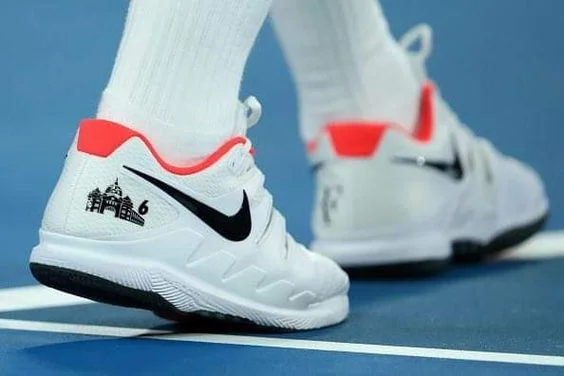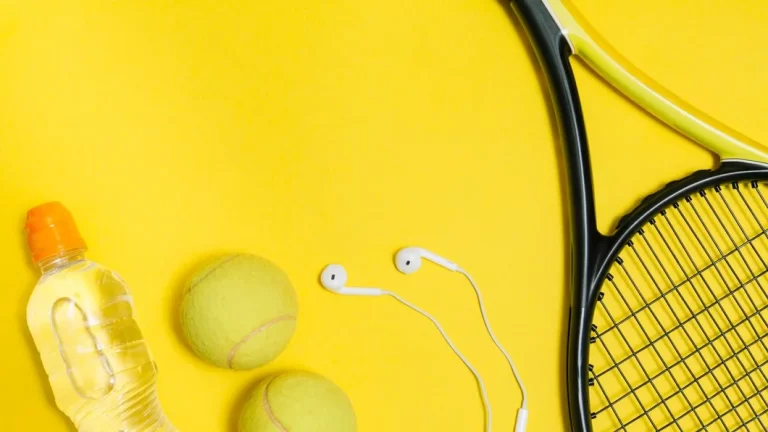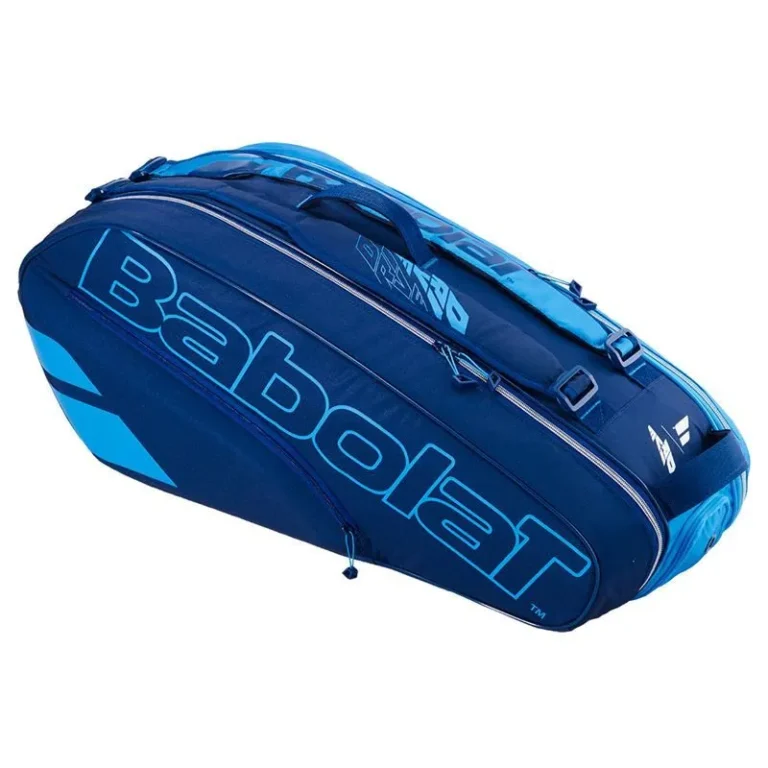Are Tennis Shoes Supposed To Be Tight?
Picture this: you walk onto the court with your racket, and your opponent is on the other side of the net. Your tennis shoes the ones that’re supposed to aid you run feel like miniature torture machines squeezing your toes. Are Tennis Shoes Supposed To Be Tight?
Relax, fellow court warrior! Like a well-executed lob, the answer is not simply yes or no. Your tennis shoes need to feel like a second skin, both in terms of support and stability during those quick sprints and swift footwork.
But painful constriction shouldn’t transform into a tightness. So, let’s jump into the tangled tennis shoe fit world where we will burst myths and uncover the mysteries of maximum performance.
The Perfect Fit For Tennis Shoes
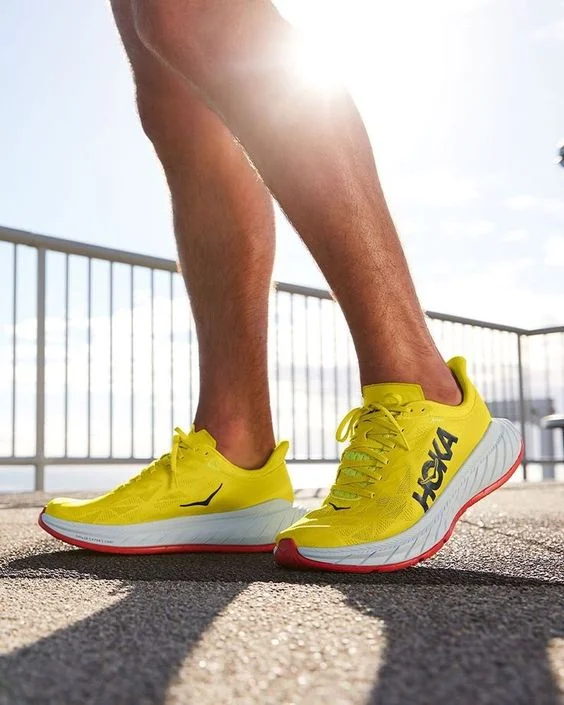
The Thumb Test: This golden rule means that your longest toe should have about a thumb’s width of space away from the shoe’s end. No pinched piggies allowed!
• Heel Hug: Your heel should not be slipping around like a wayward sock in the dryer. For blister free and non wobbly ankle, the boot must fit snug and secure.
• Midfoot Magic: The supportive cradle for the arch in the midfoot area should feel secure but not tight. Think of a soft handclas, not a bone-breaking handshake.
• Material Matters: Breathable mesh uppers provide a much more forgiving fit than the stiff leather, and let your feet expand during intense game play.
• Sock Symphony: Proper socks are not to be underestimated! Thin, snug socks avoid bunching and hot spots while thicker options can fill out slightly…
What Factors Should Be Considered When Buying Tennis Shoes?
To play tennis at an optimal level, choosing a proper pair of shoes is very important in preventing injury. Here are some key factors to consider:
Playing Style and Frequency
• Beginner: Focus on comfort and stability. Lightweight shoes may provide insufficient reinforcement.
• Intermediate: Balance comfort with performance. These types of shoes offer more lateral support and cushioning.
• Advanced: Prioritize performance and durability. Search for shoes that are lightweight and very responsive with great traction.
• Frequency: Highly frequent players require durable shoes for prolonged use.
Court Surface
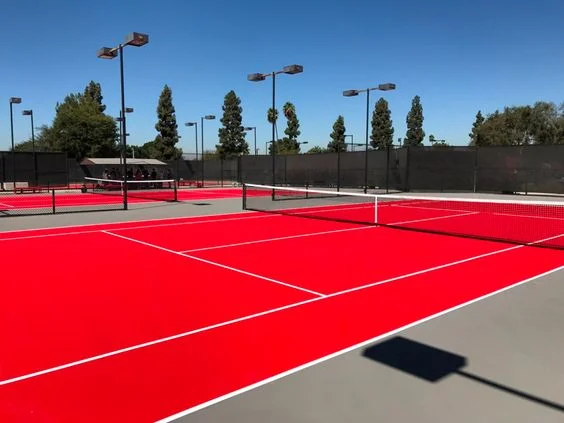
• Hard Courts: Durable outsoles herringbone tread for traction. Avoid deep treads which can catch onto abrasive surfaces.
• Clay Courts: Deep herringbone or chevron tread for grip and slide control. Look for flexible forefoot sections.
• Grass Courts: Outsoles that are flat and studded to provide the best grip and stability. Sandals are great.
Fit and Comfort
• Proper size
- You should have some room to move, but not too much.
• Snug heel and midfoot: The heel should not slip, and the midfoot must provide good support.
• Breathability: Pick breathable mesh uppers to keep your feet cool and dry.
Additional Features
• Cushioning: Select the degree of cushioning according to your liking and court surface. More padding on hard courts, and less on clay.
• Stability features: Check out medial post or torsion shank technology for additional reinforcement, especially if you have problems with pronation.
• Durability: The high-wear locations such as the toe and outsole have reinforced areas that increase the life of the shoe.
Should Tennis Shoes Be Tight Or Loose?
Tennis shoes should fit perfectly — not too tight, not too loose, but tighter like a glove. Are tennis shoes supposed to be tight? Here’s a breakdown of why this is important.
Too Tight
• Can lead to blisters, toe cramps and pain particularly in the time of intense action.
• Raises the risk of injuries such as stress fractures and tendonitis.
Too Loose
• Cause your foot to slip around in the shoe, thus reducing stability and support.
• It decreases performance and agility since energy transfers less efficiently.
• May result in tripping or stumbling, particularly during rapid turnings.
Perfect Fit
• Firm around the midfoot and heel, offering solidity and preventing heel slippage.
• A proper fitting should have enough wiggle room in the toe box for your toes to move comfortably without feeling cramped.
• Provides natural foot movement and flexibility while giving supportive lockdown.
Here are some tips for finding the perfect fit:
Perfect Fit
Wear your shoes later in the day when your feet are moderately swollen.
When trying on the shoes, wear the socks you would normally slip when playing.
Walk or jog in the shoes for heel slippage and toe movement.
You should be able to insert a thumb’s width between your longest toe and the shoe end.
How To Properly Fit Tennis Shoes?
Finding the right fit when it comes to your tennis shoes represents an essential part of being comfortable and performing well on the court.
Are tennis shoes supposed to be tight? Here’s a step-by-step guide to ensure your shoes become your trusty allies.
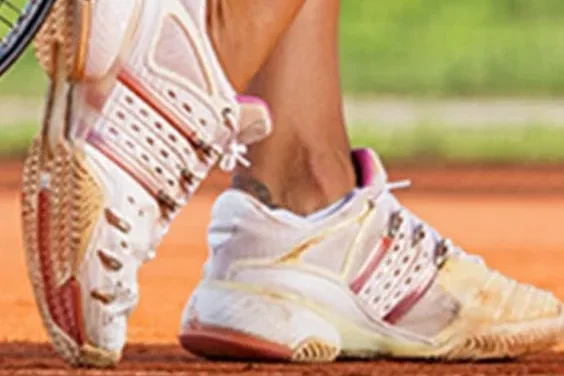
Before you even hit the store
• Know your feet: Measure both feet in the afternoon (feet swell slightly during the day) and check for any changes in size or shape.
Furthermore, it’s important to note any foot conditions like bunions or hammer toes, as they may require a larger shoe box.
• Identify your playing style: Players looking for speed and agility may opt for a lighter, tighter fit, while those who focus on comfort and stability might prefer slightly larger shoes.
At the store
• Wear the right socks: Wear the thickness or type of socks that you normally wear for playing,
• Size it up: Begin with your normal size, but you should be ready to try half sizes up or down. But remember that different brands and models can vary in fit.
• Snug, not suffocating: Midfoot and heel should be snug, no risk of slippage. When you push your toes against the wall, your heel should not rise.
• Toe wiggle room: Make sure there is a space roughly the size of your thumb between your longest toe (typically, the second one) and the shoe’s end. Wiggle your toes freely – they should not be cramped up or touching the front.
• Heel counter check: Your heel should comfortably and securely cradle in the back of the shoe. There is no slipping of excessive movement.
• Walk it out: Walk around the store in the shoes. Observe any areas of pressure, rubbing, or instability. Test balance by jumping and mimicking lateral movements (such as stepping).
• Trust your gut: When something feels uncomfortable in the slightest, don’t compromise. The ideal fit should feel comfortable and supportive from the start.
Also Read: Can You Use Tennis Shoes For Badminton?
Beyond the Basics
• Consider Your Court: Firmer hard courts require more cushioning and shock absorption, while clay courts are better served by their aggressive treads. Choose shoes made for your field of play.
• Break-In Blues: The new shoes may feel tight when first worn but don’t be alarmed! A soft break-in period such as a couple of brief practice sessions lets the materials adjust to your personal feet.
• Listen to Your Feet: They’re your trusty guides. If shoes pinch, rub or hurt in any way do not remain quiet. Return them! This will make your game and sanity happy.
• Wide Feet Welcome: For those of you with wider feet, don’t try to shove your poor tootsies into standard-width shoes. Several brands are available in wider widths for happy toes and stellar performance.
• The Lacing Lowdown: Experiment with different lacing techniques! A heel lock lace could provide a snugger mid foot whilst a criss-cross pattern may offer looser fore foot.
Conclusion
In the fast-paced environment of tennis, where every step matters, appropriate footwear can be truly transformative. There is a need to find the perfect balance between being snug and comfortable because it increases your performance while ensuring that your feet are safe. Therefore, when you next pose the question Are Tennis Shoes Supposed To Be Tight? remember that it is in such a perfect fit where your game and your health don’t clash.
End the last sentence with a question: Have you managed to find your perfect pair of tennis shoes?

